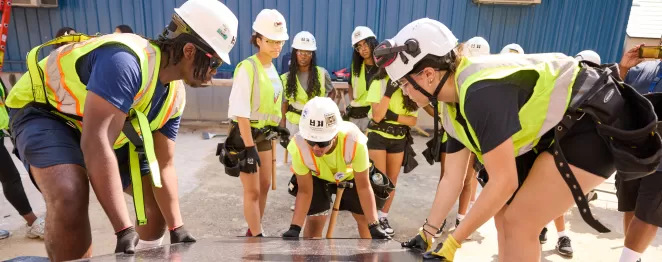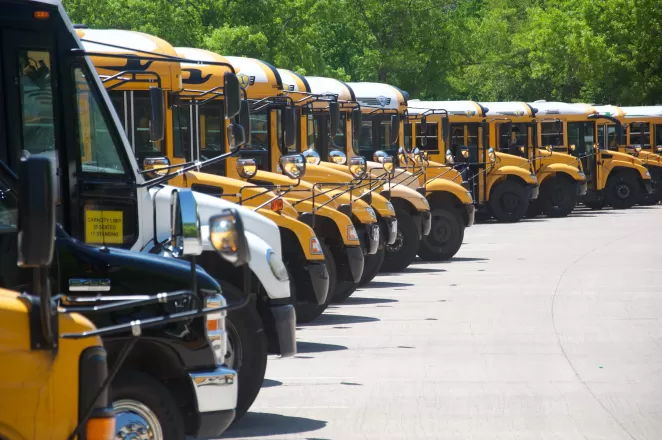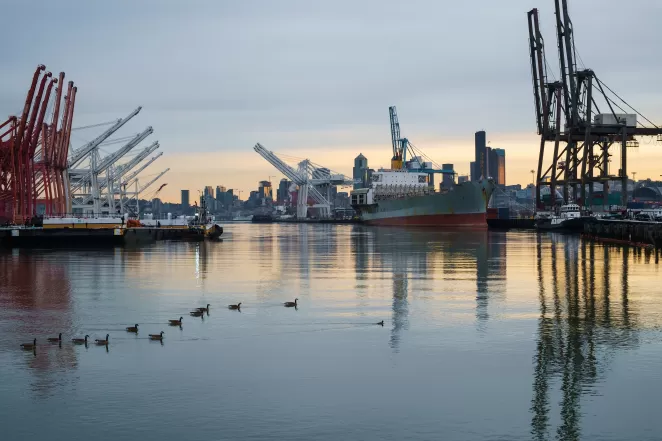Resilience Hubs in Houston Help When Climate Disasters Strike

When storms come to Northeast Houston, neighbors in Trinity Gardens know to knock on the door of Doris Brown. Thanks to climate change, those storms are more frequent and greater in intensity.
Brown, a great-grandmother, is the West Street Recovery’s Co-Director of Community Research, Organizing, and Special Events and the co-founder of Northeast Action Collective. In person, she is active, energetic, and warm, but during Winter Storm Uri in 2021, she was quite literally freezing, hiding under piles of blankets to stay alive.
“I almost froze during that time,” she says. “We had an electrical outage that lasted for more than a week. And a lot of people with water and stuff, their pipes and different things had busted.”
The storm raged across the Lone Star State, knocking out power and ultimately leaving more than 200 Texans dead when the lights went out. Afterwards, Brown had solar panels installed by West Street Recovery at no cost, part of a pilot program that turned her home into a climate resilience hub. During the next power outage, people came to her looking for help.
Brown's solar-powered home is not just well-powered during a storm. Brown’s garage is as well-stocked and organized as a state-funded shelter. She keeps gallons of water on pallets, food, insulin sleeves, clothes, gloves, sleeping bags, and more. By her estimates, she can now go up to 15 days on her own and support her community just from the supplies she keeps in her garage.
There are four of these hubs in Trinity Gardens, including hers. When waters rise or other weather events make the roads impassable, it helps to have local supply depots. For many underserved and low-income neighborhoods, the way to official Houston aid centers is blocked by water or debris.
“We flood out here on a regular basis,” she says. “It does not have to be a disaster. It could be just a real heavy rain. And sometimes, I leave my neighborhood and it’s 45 minutes before I can get back in my neighborhood because out there on the street it flows like a little river.”
West End Recovery was formed in 2017 following Hurricane Harvey. The storm devastated the Houston area. Using rubber kayaks, volunteers navigated flooded streets in Kashmere Gardens, Trinity Gardens and Lakewood to bring food and medicine. Like many neighborhoods that are majority non-white and low income, aid can be slow to reach them. The group also worked on gutting houses and rebuilding once the waters receded.
“Whether it's a heat wave in July and August, whether it's a flood as a result of a hurricane, these hubs will serve multi-purposes and will make our community safer, healthier, stronger, and more powerful when it comes to speaking,” says Bullard.
West End Recovery eventually partnered with the Northeast Action Collective, which led to the idea of resilience hubs like Brown’s. It also led to a fruitful partnership with Dr. Robert Bullard, and the Bullard Center for Environmental and Climate Justice at Texas Southern University. Bullard’s work promotes environmental justice by supporting local activist groups like West End Recovery and Northeast Action Collective.
“We don’t parachute in any community uninvited,” says Bullard. “We work in a way that our model is community-university partnership model.”
One of the ways that the Bullard Center is able to aid West End Recovery and Northeast Action Collective is through the Justice40 Initiative. Established during the Biden-Harris Administration’s first week in office in 2021 via an Executive Order, the executive branch-driven initiative allocates 40 percent of some domestic resources related to climate change, pollution, and disaster mitigation to underserved and marginalized communities. It uses federally covered programs that were created with the Inflation Reduction Act as well as some which previously existed.
“Justice 40 is a crucial and important initiative by the Biden administration that attempts to make transformative changes in the way that we do environmental climate energy justice,” says Bullard. “And as we transition to a clean energy economy, Justice40 says just outright that 40% of the benefits that would accrue to moving to a clean energy economy must go to those communities that historically have been left out and left behind. Well, the government defined those communities as disadvantaged communities. We define them as environmental justice communities and communities that have been underserved for decades, in some cases more than a century.”
Remember the little rivers that Brown had to cross whenever she left her neighborhood? Help from Justice40 and the Bullard Center are working on that. The Bullard Center has been helping them navigate the maze of grants and applications to bring relief to the neighborhood.
“We went to County where we’ve been fighting the city for almost three years to get something different done about the drainage and different things because historically we flood just like I said, even when it’s just the heavy rain,” says Brown. “We won $40 million for the local drainage projects and for the sewage land because we’ve been doing research . . . This new project that they have, they’re putting in drainage ditches, they’re putting in underground big old tubes that would take the water out of the neighborhood.”
It's a potent meshing of the large-scale and the small scale. The collaboration of millions of federal dollars and local community spirit of the hubs helps build an overall sense of control among the people who so often get ignored during crises.
“It gives them hope,” says Brown. “It's just something that they need to feel more comfortable in their own skins and at their houses and stuff because they know that someone is close by that can help them and get to them quicker.”
Thanks to the Bullard Center and its founder’s long history of working with environmental justice, groups like West End Recovery have more power than ever before to combat climate change. Rather than coming in and telling them how to fix problems, they let leaders like Brown drive the change.
“Whether it's a heat wave in July and August, whether it's a flood as a result of a hurricane, these hubs will serve multi-purposes and will make our community safer, healthier, stronger, and more powerful when it comes to speaking,” says Bullard. “The hub leaders speaking for themselves. It's one of the principles of environmental justice. People must speak for themselves and be in those rooms and decisions are being made when it comes to the city, the county, and when it comes to planning.”




